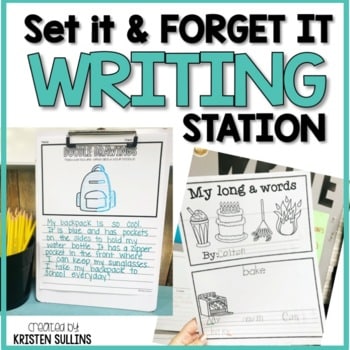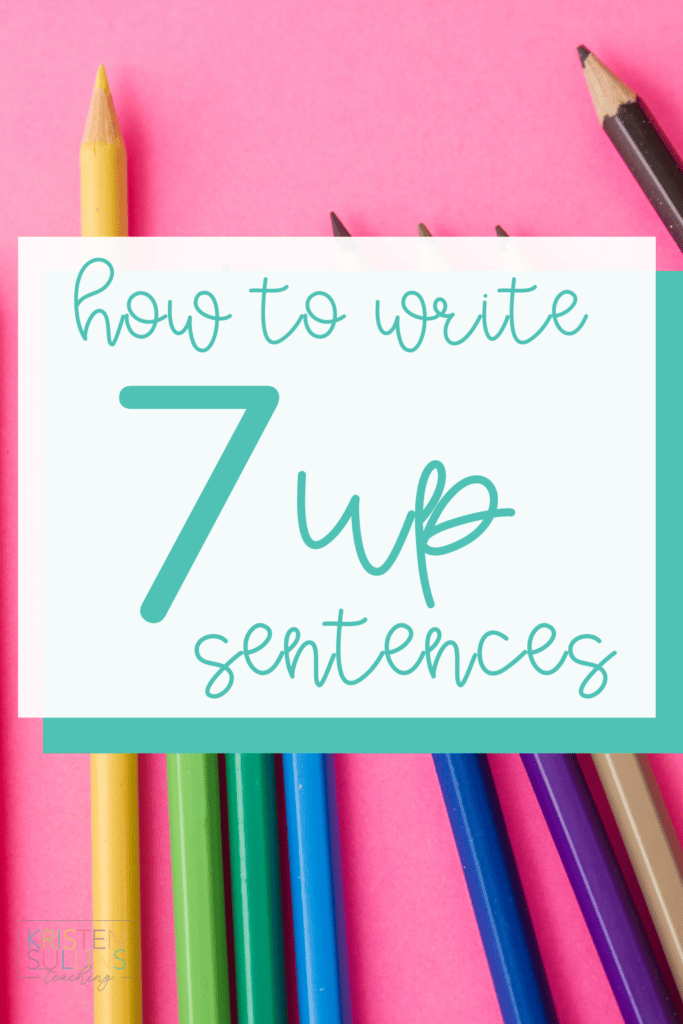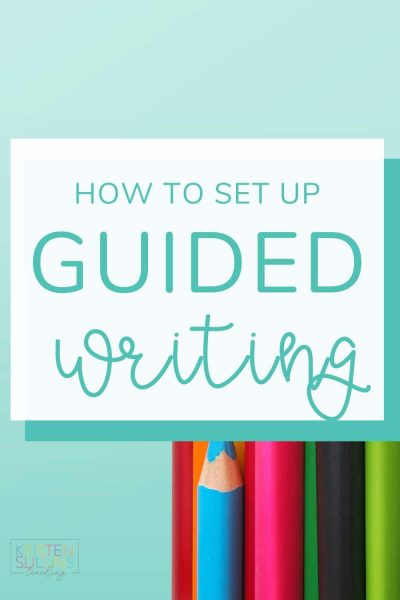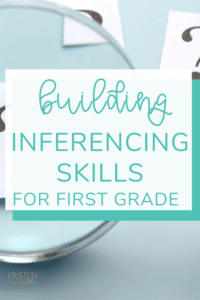Writing in first grade can be rough, especially at the start of the year. I have tried implementing a variety of teaching strategies over the years to help my students become authors. It is very challenging though!
Each new class has varying skill sets and I hate feeling like I’m reinventing the wheel each and every year.
What I have noticed, year after year, is that the biggest struggles students face when it comes to writing is deciding what they are going to write about, getting started, and interest/confidence in writing.
What I have found has helped my students overcome these struggles is guided writing!
Writing is not something that comes naturally, it is learned through guidance and mentorship.
Primary students have limited understanding of writing strategies, and it is our job to introduce those strategies and provide opportunities for mastery.
Guided writing allows us to help students learn, implement, and master a variety of writing skills.
Through the use of modeling, shared writing experiences, interactive writing, guided writing and independent writing; students are able to hone important writing skills and strategies.
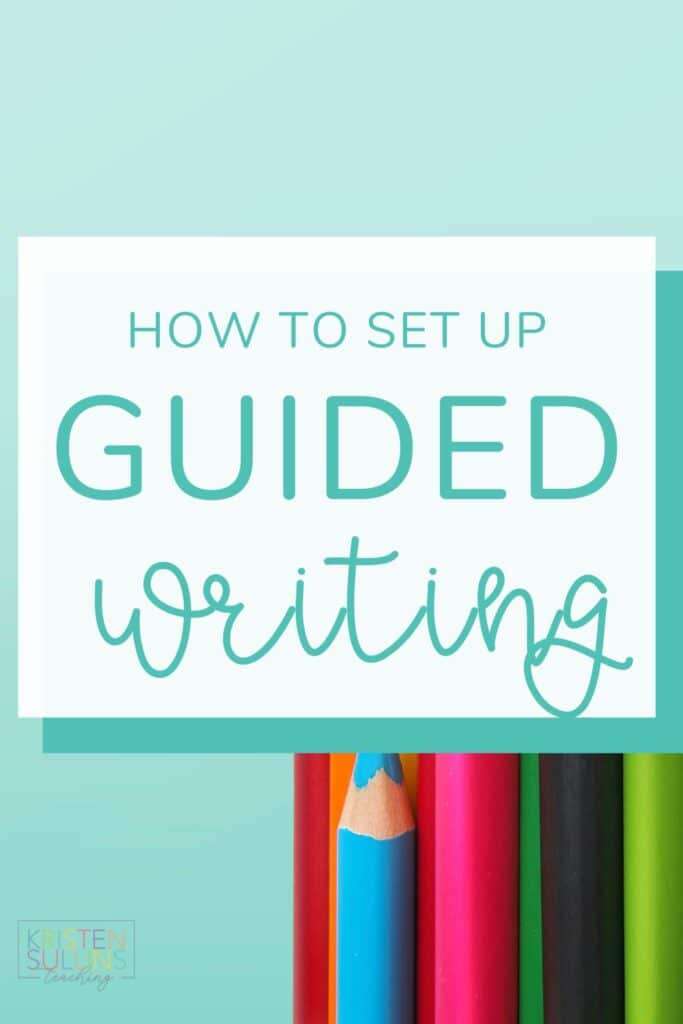
So what is guided writing?
It is writing instruction that falls between teacher modeled writing and independent writing.
With the use of scaffolding to help support students, teachers are able to help students become independent writers.
The teacher modeling is done in a group setting, where students contribute and practice writing before they move on to do it on their own.
This helps students develop an understanding for how to write, as well as building their confidence in writing.
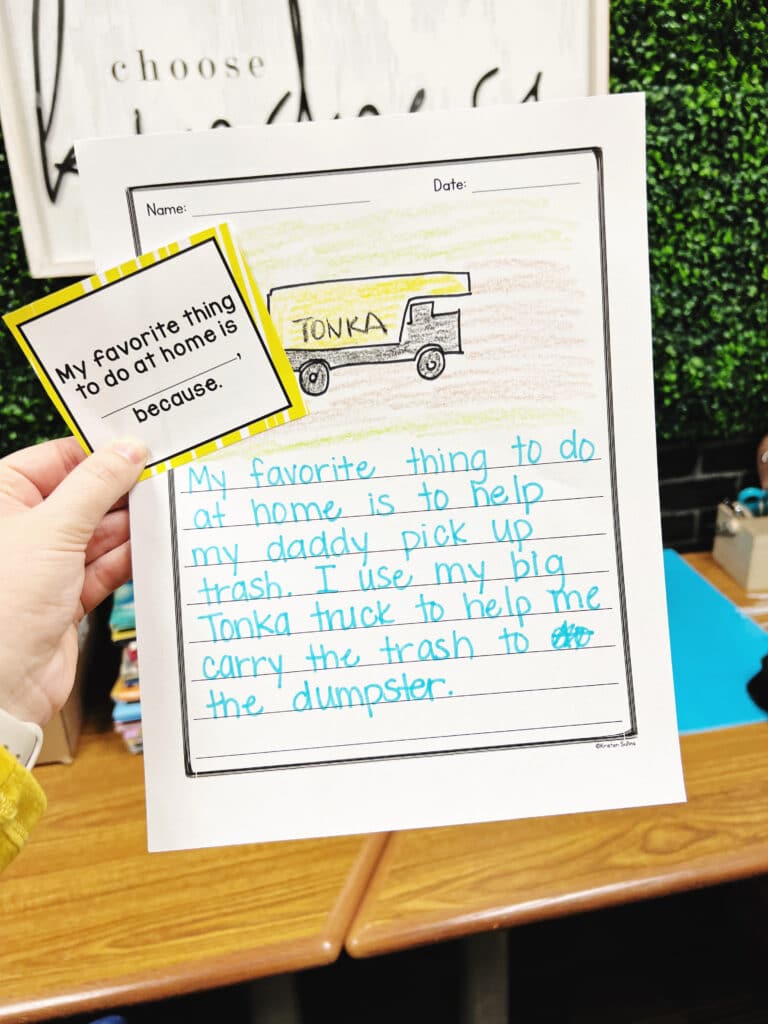
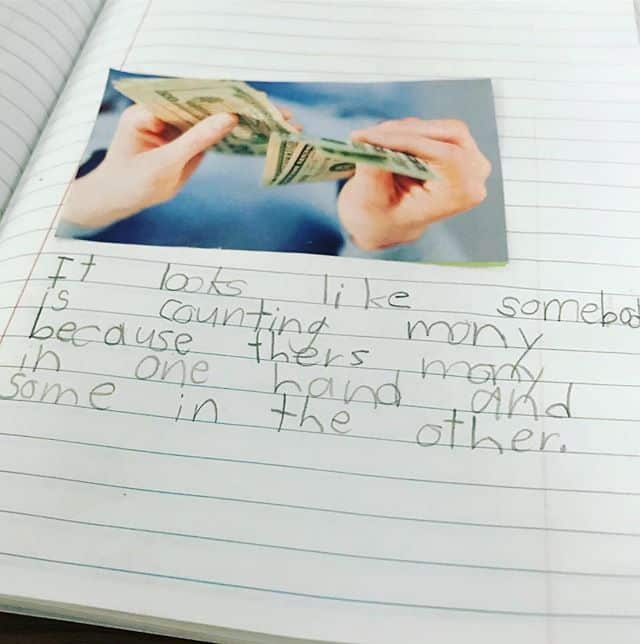
Guided Writing Groups for First Grade
There are a couple ways you can teach guided writing: whole group or small group.
When I start out the year, we start with simple writing tasks that are easy for the whole class to follow and participate with.
As the year progresses, however, I switch to small group guided writing lessons.
This allows me to differentiate my instruction for the varying levels of students in my classroom.
I have found it beneficial to hold guided writing groups for every type of writing you do during your year.
Writing groups are a great way to ensure success and help to continue building student confidence in writing.
How to set up guided writing groups:
First you want to make sure you have writing skill goals for your students. For example: early in the year I want students to use a capital at the beginning of each sentence and punctuation at the end. This may seem simple, but you’d be surprised at how difficult this is for students.
Starting and Creating Groups:
- Select a writing skills goal to focus on
- Select students that would benefit from focusing on that skill
- Meet with this group while others are working on independent writing tasks
Each group may be working on a different skill, some groups may be working on the same skill.
It doesn’t matter as long as you are meeting with your students and working on what it is each one of them needs.
These groups should be flexible! I am constantly switching my students around based on their individual needs.
Some students need a lot of help mastering a skill, while others just need a few reminders and they are off!
As the year progresses, you will want to change your writing groups.
Here are some more Writing Group Ideas:
- Teacher demonstrates how to edit
- Model chosen skills or writing types (whatever you may be focusing on at this time)
- Provide resources for students to use: mentor texts, graphic organizers, guided writing pages, etc.
- Continue to meet with students based on skills
Students should continue to work on skills that have been taught and reinforced throughout each writing unit. They should also be working on editing throughout the year.
These are important things that need to be modeled and focused on during your guided writing time.
First Grade Guided Writing in Action
I don’t know about you, but my days go by SO FAST! Each moment of the day feels like it is scheduled out and I only have a certain allotted time to do each subject.
My writing time is no exception, but it is something we have to prioritize.
My guided writing time is a quick 20 minute time-frame. I know what you’re thinking, no way can you get it all in 20 minutes, but you can as long as you are well prepared.
Now, do I always get everything I want in? NOPE!
The more lessons I do, however, the better my time management gets.
Like I said earlier, at the start of the year I do whole group guided writing. This allows me to have the amount of time I need to complete my lesson with the entire class, as well as, allows my students to develop an understanding for what our writing time is going to be like.
Here is how I start:
- Engage students in a short, shared experience. This could be from an informational text you read together, or something in your classroom/school community.
- Involve students in conversations about this experience
- Have students explicitly practice how they are going to go about writing this experience. I start by modeling this aloud to the class and as the year progresses, they will do this with a neighbor and then eventually to themselves.
- Teach one (or two) writing strategies
- These strategies should be posted in your classroom. You can add strategies as you go, or you can start with a poster and model one strategy at a time.
- Some strategies may include: writing content, punctuation, spelling, sentence structure, composing
- Have a brief discussion with students on how they are going to implement this strategy into their writing task for the day.
- These strategies should be posted in your classroom. You can add strategies as you go, or you can start with a poster and model one strategy at a time.
- Provide students with 5-10 minutes of writing time
- While students are writing I am walking around and providing immediate, but brief, assistance. I make it a point to not stop and work with one student for long.
- Monitor students during this time.
- Much like with independent reading, we want to build student’s independent writing stamina. They should be able to produce a short, but complete piece of writing.
- Include a brief sharing activity
- I do try to do this each time we do a writing activity, but time never seems to be on my side. We try to squeeze in a quick share time with the whole group, small group or with a partner. Some days are better than others. This section has been a work-in-progress for me. Sharing writing is VERY important and I do make a point to allow students to share weekly. One of my goals this year is to get better with this time management.
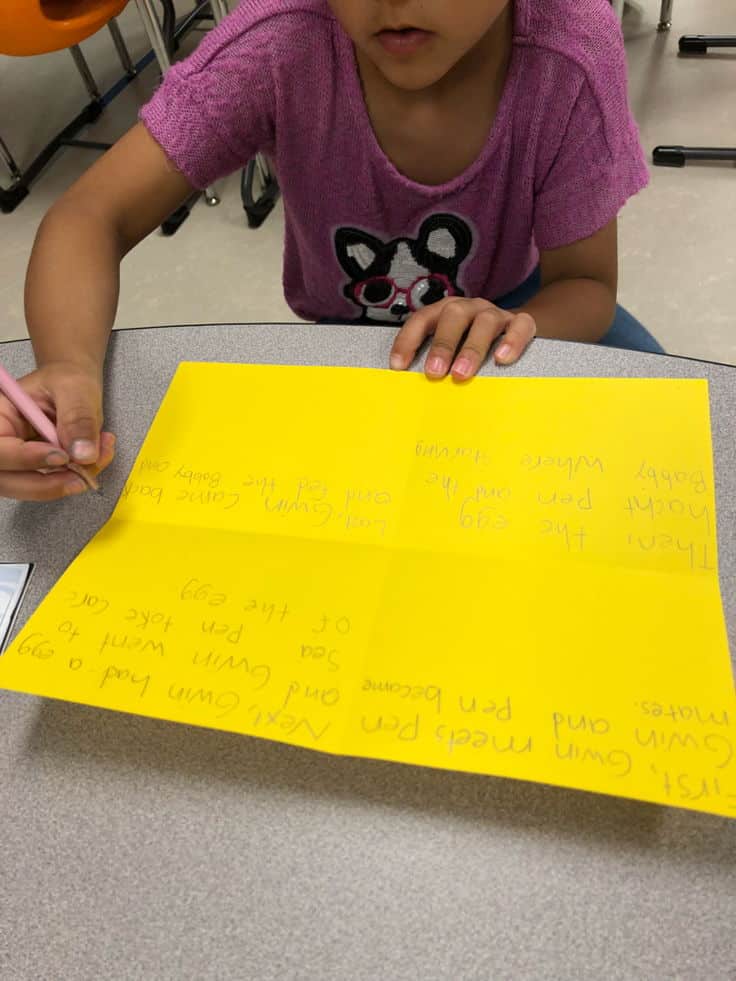
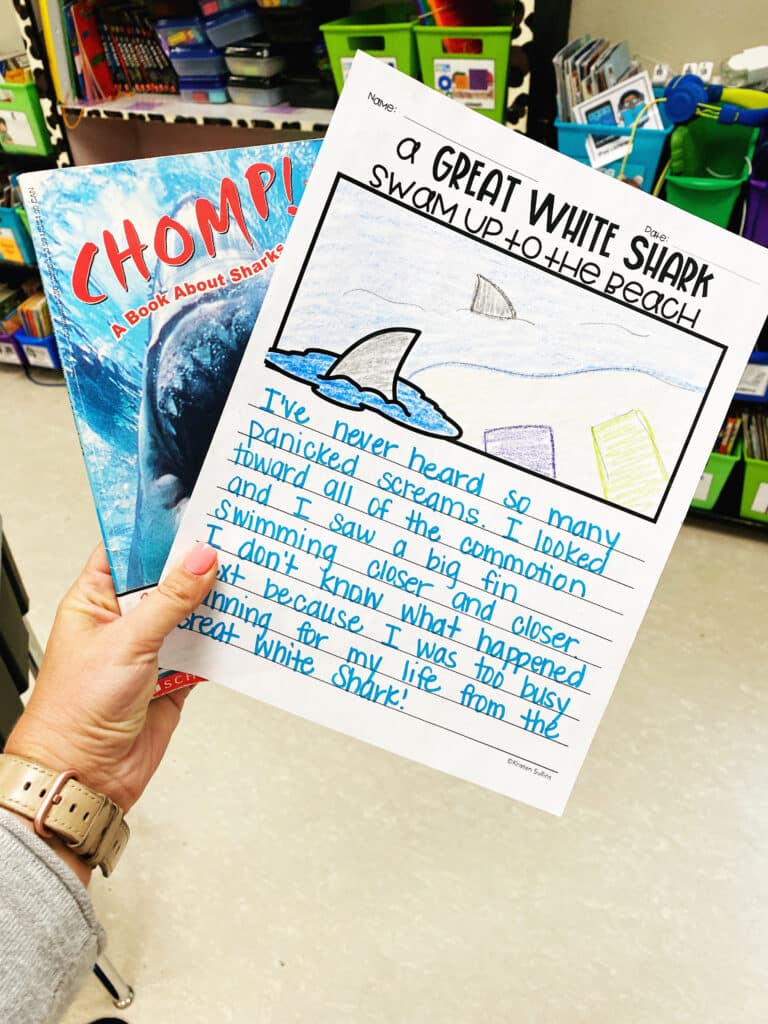
Benefits of Guided Writing in First Grade
In order to help our students become successful writers, we have to provide them with a variety of opportunities for writing.
Not only during our writing time, but throughout the day.
Cross-curricular writing is also very important and something I’m constantly trying to implement in my classroom.
I want to provide students with meaningful writing experiences during our writing and guided writing time that allows for them to be successful writers in other areas of our day.
Whether they are writing about the STEM structure they built, or the famous city we are researching, I want my students to be using and honing their writing skills.
Writing Activities for First Grade
A teacher’s dream is to “set it and forget it”… and with this writing bundle, now you can!
This bundle includes the two writing resources I use in my own classroom ALL YEAR LONG that require very little thought and planning but offer countless opportunities for my writers to grow in independence, creativity and author’s craft.

